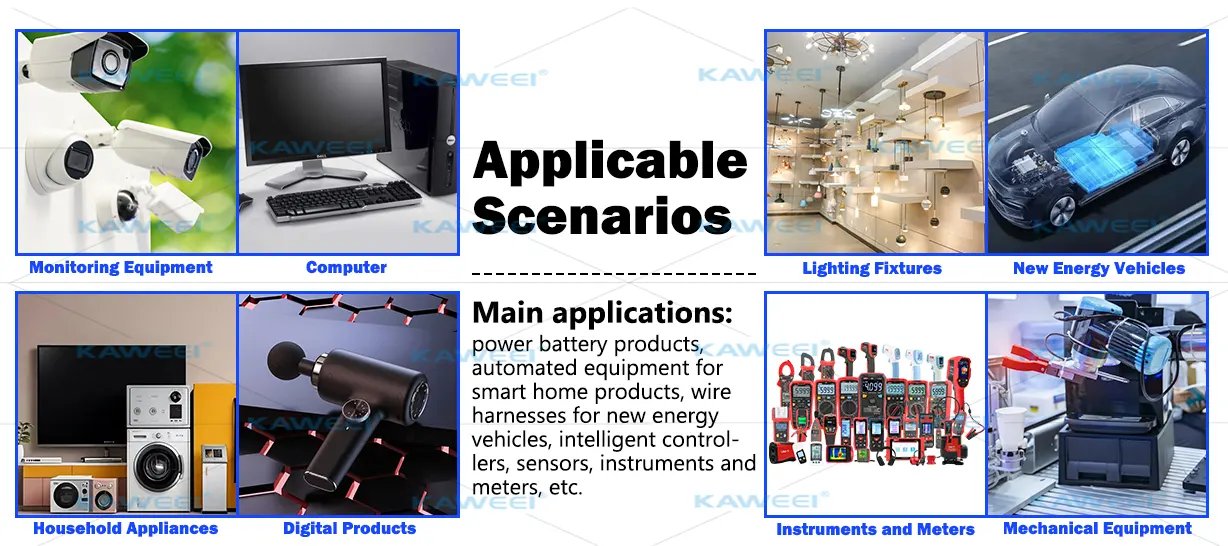Wiring Harness: The Link Connecting the World
In the fast-paced operation of modern society, there is a component that appears ordinary yet exists everywhere — the wiring harness. Whether in power transmission, information communication, automotive systems, or industrial control, wiring harnesses function like blood vessels, delivering energy and signals to every corner where they are needed. Though often overlooked, they are the foundation that keeps modern civilization running smoothly.
What Is a Wiring Harness?
A wiring harness is an assembly in which multiple wires are bound and organized in a structured manner. It typically consists of conductors, insulating sheaths, connectors, and fastening elements. Its main function is to ensure the reliable transmission of electricity or signals between different devices or modules. Compared with loose wiring, harnesses offer advantages such as compact structure, simplified installation, organized management, and higher reliability.
Classification of Wiring Harnesses
Depending on the criteria, wiring harnesses can be classified into different types:
- By application: power harnesses, communication harnesses, automotive harnesses, household appliance harnesses.
- By function: power-supply harnesses, signal harnesses, control harnesses.
This classification allows wiring harnesses to meet the specific requirements of different scenarios, providing optimal solutions for power and signal transmission.

Wide Applications
Power Industry
Harnesses play a core role in generation, transmission, and distribution systems, ensuring that energy is delivered safely and stably.
Telecommunications
Network cables and optical fiber harnesses support high-speed, reliable information transfer.
Automotive Industry
Modern vehicles rely on harnesses to connect engine management systems, lighting systems, navigation, and infotainment.
Consumer Electronics & Appliances
From refrigerators to computers, washing machines to smartphones, nearly all electronic devices depend on harnesses for internal circuit connections.
Technological Trends
With evolving technology and market demand, wiring harnesses are advancing in several directions:
Performance Upgrades
- Higher conductivity and efficiency, reducing power loss
- Better shielding to minimize electromagnetic interference (EMI)
- Lighter, thinner designs to meet miniaturization and lightweight requirements
Green & Sustainable
- Use of recyclable, non-toxic, eco-friendly materials
- Compliance with environmental standards (e.g., RoHS, REACH)
- Energy-saving and waste-reducing manufacturing processes
Intelligent Features
- Embedded sensors for real-time monitoring of current, temperature, and status
- Integration with IoT and big data for remote diagnostics and fault prediction
- Exploration of modular and wireless designs for greater flexibility and efficiency
Challenges Ahead
Despite promising prospects, the wiring harness industry faces notable challenges:
- Rising costs due to advanced materials and manufacturing processes
- Stricter requirements for EMI shielding in high-speed data transmission
- Balancing lightweight design with safety and durability
- Ensuring consistency and reliability in mass production
Future Outlook
As electric vehicles, autonomous driving, 5G/6G communications, and the Internet of Things continue to grow, wiring harnesses will become even more vital. In the future, harnesses will not only serve as channels for power and signal but also act as the “nervous system” of intelligent device networks. Lightweight, eco-friendly, and smart harnesses will define the industry’s direction, while advanced manufacturing technologies such as automation, 3D printing, and flexible electronics may usher in entirely new forms and applications.
The wiring harness is the “invisible connector” of modern society. Though rarely noticed, it exists everywhere, enabling energy transmission, information exchange, and daily conveniences. As technology advances and industries evolve, wiring harnesses will continue to play an increasingly critical role, truly serving as the link that connects the world.


